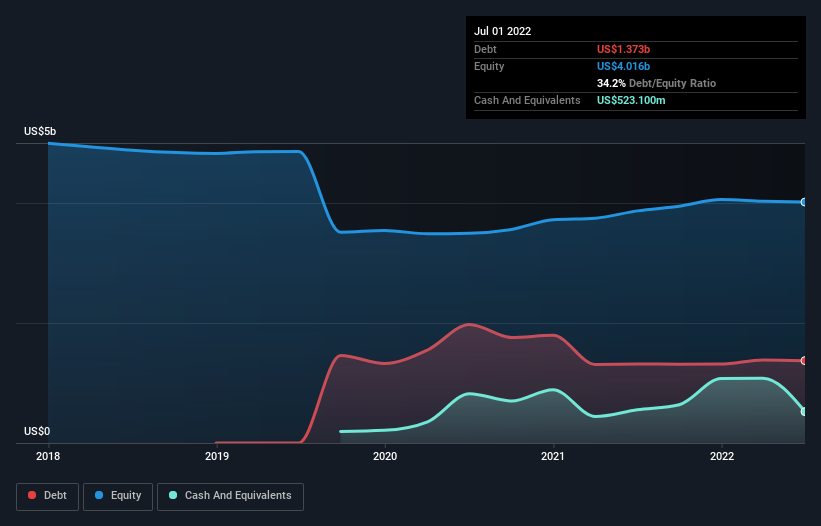The external fund manager backed by Berkshire Hathaway’s Charlie Munger, Li Lu, makes no bones about it when he says ‘The biggest investment risk is not the volatility of prices, but whether you will suffer a permanent loss of capital.’ When we think about how risky a company is, we always like to look at its use of debt, since debt overload can lead to ruin. We note that Envista Holdings Corporation (NYSE:NVST) does have debt on its balance sheet. But should shareholders be worried about its use of debt?
What Risk Does Debt Bring?
Debt and other liabilities become risky for a business when it cannot easily fulfill those obligations, either with free cash flow or by raising capital at an attractive price. Ultimately, if the company can’t fulfill its legal obligations to repay debt, shareholders could walk away with nothing. However, a more common (but still painful) scenario is that it has to raise new equity capital at a low price, thus permanently diluting shareholders. Of course, the upside of debt is that it often represents cheap capital, especially when it replaces dilution in a company with the ability to reinvest at high rates of return. When we think about a company’s use of debt, we first look at cash and debt together.
How Much Debt Does Envista Holdings Carry?
The image below, which you can click on for greater detail, shows that at July 2022 Envista Holdings had debt of US$1.37b, up from US$1.31b in one year. However, because it has a cash reserve of US$523.1m, its net debt is less, at about US$849.6m.
How Strong Is Envista Holdings’ Balance Sheet?
We can see from the most recent balance sheet that Envista Holdings had liabilities of US$1.26b falling due within a year, and liabilities of US$1.19b due beyond that. Offsetting this, it had US$523.1m in cash and US$372.8m in receivables that were due within 12 months. So its liabilities outweigh the sum of its cash and (near-term) receivables by US$1.55b.
This deficit isn’t so bad because Envista Holdings is worth US$5.47b, and thus could probably raise enough capital to shore up its balance sheet, if the need arose. However, it is still worthwhile taking a close look at its ability to pay off debt.
In order to size up a company’s debt relative to its earnings, we calculate its net debt divided by its earnings before interest, tax, depreciation, and amortization (EBITDA) and its earnings before interest and tax (EBIT) divided by its interest expense (its interest cover). This way, we consider both the absolute quantum of the debt, as well as the interest rates paid on it.
We’d say that Envista Holdings’s moderate net debt to EBITDA ratio ( being 1.7), indicates prudence when it comes to debt. And its commanding EBIT of 10.8 times its interest expense, implies the debt load is as light as a peacock feather. But the other side of the story is that Envista Holdings saw its EBIT decline by 6.6% over the last year. If earnings continue to decline at that rate the company may have increasing difficulty managing its debt load. There’s no doubt that we learn most about debt from the balance sheet. But ultimately the future profitability of the business will decide if Envista Holdings can strengthen its balance sheet over time.
But our final consideration is also important, because a company cannot pay debt with paper profits; it needs cold hard cash. So we clearly need to look at whether that EBIT is leading to corresponding free cash flow. Over the last three years, Envista Holdings recorded free cash flow worth a fulsome 89% of its EBIT, which is stronger than we’d usually expect. That puts it in a very strong position to pay down debt.
Our View
The good news is that Envista Holdings’s demonstrated ability to convert EBIT to free cash flow delights us like a fluffy puppy does a toddler. But truth be told we feel its EBIT growth rate does undermine this impression a bit. We would also note that Medical Equipment industry companies like Envista Holdings commonly do use debt without problems. Looking at all the aforementioned factors together, it strikes us that Envista Holdings can handle its debt fairly comfortably. Of course, while this leverage can enhance returns on equity, it does bring more risk, so it’s worth keeping an eye on this one.





































